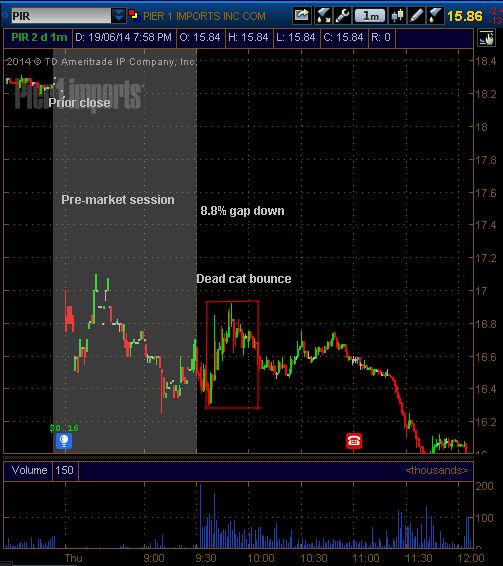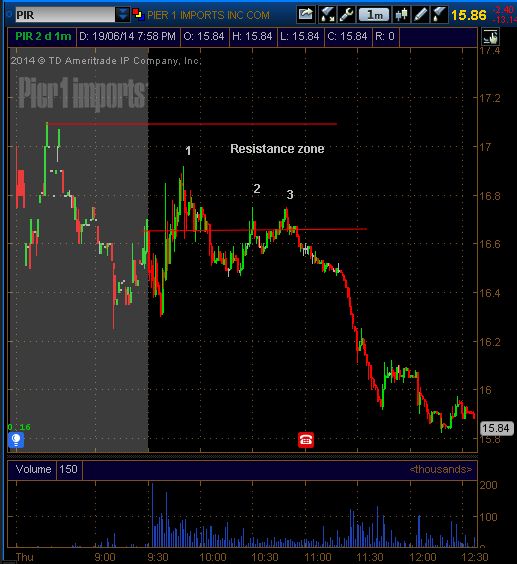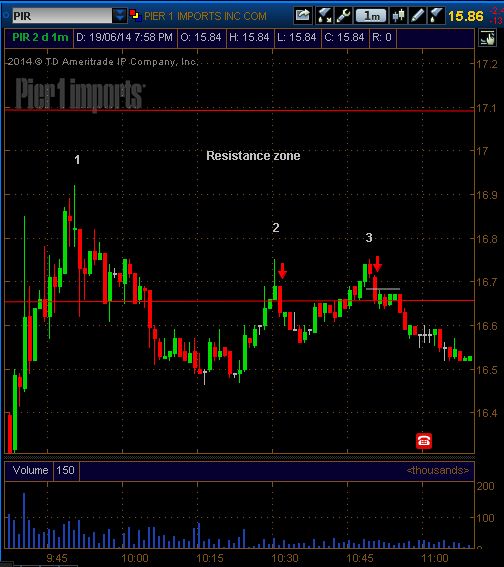Trading the “Dead Cat Bounce”
One of the best short trades in the world is the “dead cat bounce.” It is called so because even though the market may bounce after a devastating fall, it isn’t going to moving significantly higher anytime soon. The bounce is dead and those that go long expecting the price to rally further are also dead; it’s a sucker’s bet. Here’s what the dead cat bounce is, how to avoid getting trapped by it, and how to capitalize on it.
The Dead Cat Bounce
The dead cat bounce is when the price of a stock gaps down dramatically, typically 10% (or close to it) or more from the prior close. A gap of this magnitude is usually caused by earnings or news which came out after the prior closing bell.
The gap is caused by massive selling during the pre-market and at the open. Yet once the stock begins trading it attracts novice traders and investors who now view the stock as a bargain. Usually not too long after the open these people will jump in and buy the stock up. The buying will typically dies out by the time the stock reaches the open price, or slightly above.
Where the stock opens is likely to be a major resistance area, so when the price nears that area professional traders are looking for shorting opportunities. When the price enters the resistance area professionals step in to short any further rallies, and the novice traders and investors who just bought realize their mistake–this stock just dropped 10% and is not a stock many others want to own right now. With even the short-term buyers bailing on the long trade, the stock quickly sinks, often to a new low for the day.
Figure 1 shows a dead cat bounce in Pier 1 Imports (NYSE:PIR)

Source: Thinkorswim
Before the market opens the stock is already trading significantly lower (light grey area). When the market opens (black area) the price drops at first but then rallies higher, moving above the open price, but stays below the high of the pre-market session. Between the open and the high of the pre-market session marks a major resistance area where price is likely to stall out, and experienced traders are waiting to jump on the short, expecting the selling to continue.
Even Dead Cats Have Two or Three Lives
After a significant gap down the price will often rally to the open price, or just above or below it, within a short period of time–minutes–and then fall again. Since this is right near the open the price action can be erratic, and trade signals may be disguised in a whole bunch of noise and big price bars.
This level will often get tested one or two more times though. Sometimes it occurs in the same day, and sometimes it occurs several days later. These re-tests are usually less volatile, and therefore the trades are easier to spot.
Figure 2 shows the same chart, but this time with the resistance marked by horizontal red lines. The price moves into the resistance zone 3 times. The second and third times there is less volatility, and the bars are quite small, so we can see the shift in momentum back to the downside more clearly.

Source: Thinkorswim
Trading the Dead Cat Bounce
For the most part I recommend most traders–unless you are experienced– skip the first bounce. While this can be the most lucrative and fast moving, given the potentially erratic nature of the price near the open (following news) a trade signal may be hard to isolate.
Trade it though, if you feel so inclined using the following method.
- Wait for the price to enter into the resistance region.
- Go short when down movement completely erases the progress of the latest green/up bar. This can occur inside or just below the resistance zone, if the price has already fallen below the zone after being in it.
Figure 3 shows the price bars you would have gone short on. For number 2 we have a rise of all green bars which move into the resistance zone. We then have a strong red bar which moves below the low of the last green candle. The green candle also had a long tail on the top, which indicated selling pressure. This followed by a strong red bar was a sell signal. Sell short (buy puts) when the price moves below the low of the green candle (this would have been right near the horizontal red line).

Source: Thinkorswim
For number 3 the price rallies into the resistance zone, and at first each bar is moving higher (higher lows). Two red bars occur in succession and second red bar moves below the low of the green bar. It took two red bars to take out the low of the green bar, but the overall message was that the price is heading lower and you need to get short (right near small grey horizontal line).
If trading binary options, look to exit these trades fairly quickly. If trading on a one minute chart, trades can last 1 to 5 minutes. This should provide enough time for the price to move into the money.
If trading the actual stock you will want to hold longer, as the expectation is that the price will continue to drop, potentially significantly, which will increase your profit on your trade if the drop materializes. In this case the price eventually fell well below $16.
Final Word
If a stock drops 10% (close to it, or more) overnight, don’t go bargain hunting. Instead, wait for a rally and get ready to snack it short when the price enters the resistance zone and begins to falter. If trading binaries, look to get out fairly quickly. If trading the actual stock the goal is to have a short position when the next major wave of selling occurs. Sometimes the price will test the resistance zone near the open a couple times on the day of the gap, and something it will only test it once. If the stock continues to fall, watch for the price to re-test the resistance zone several days later; if that occurs the same tactics can be used again.
By Cory Mitchell, CMT – https://twitter.com/corymitc